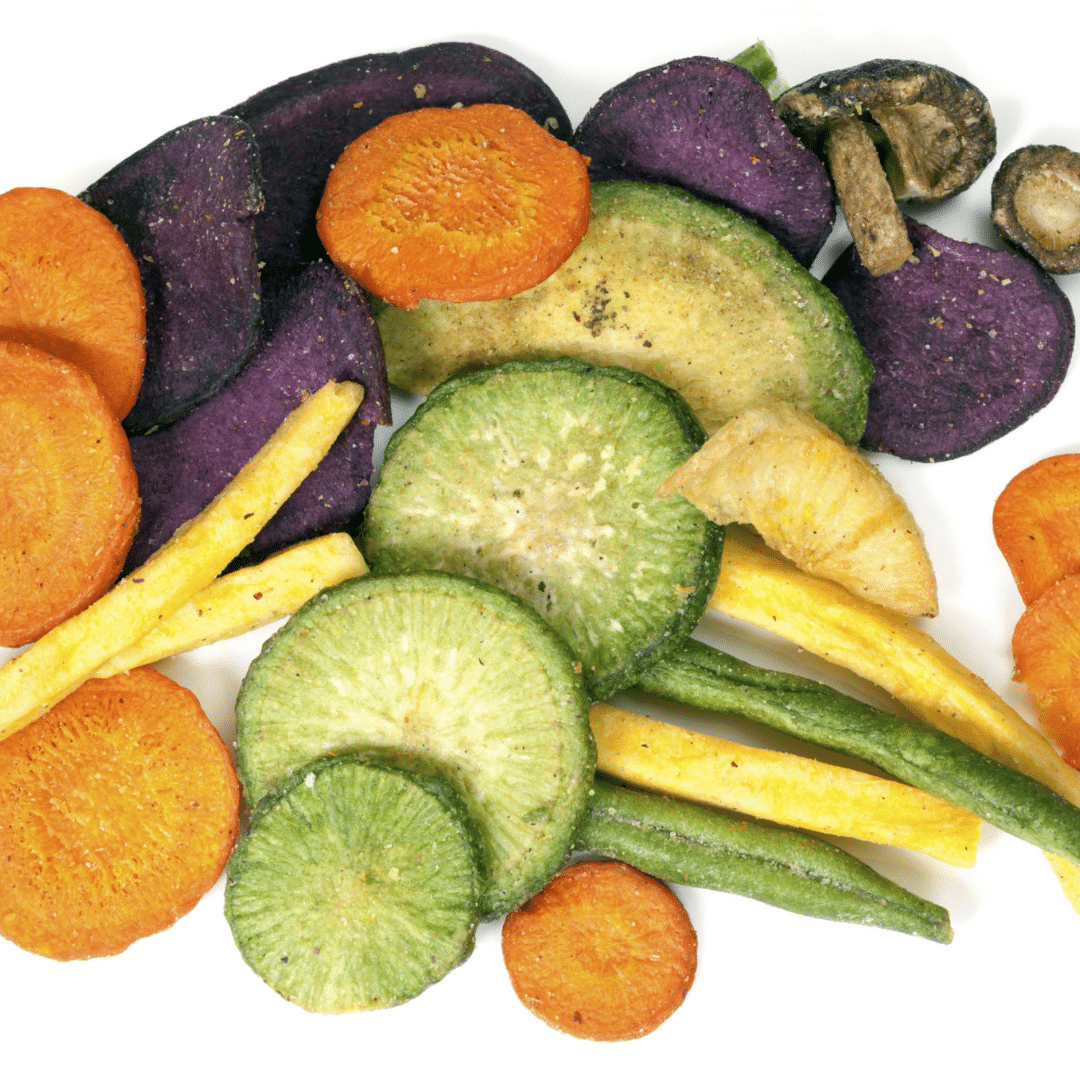




Cooking with dehydrated vegetables can be a delightful way to preserve the bounty of your garden or make long-lasting, nutritious food choices. But for many, the art of converting dehydrated veggies to their fresh counterparts can be a bit tricky. Fear not! This blog post will guide you through the process and introduce you to the essential dehydrated vegetable conversion chart that makes your cooking experience much smoother.
Understanding how to properly rehydrate and substitute dehydrated vegetables for fresh ingredients is crucial. A dehydrated vegetable conversion chart is a handy tool that helps you determine the right amount of dehydrated food to use in place of fresh food. This guide will also touch on other types of preserved foods, such as freeze-dried foods, and how they compare.
A dehydrated vegetable conversion chart is essential for anyone who regularly uses a dehydrator. It allows you to determine the correct ratios when recipes call for fresh ingredients. Here’s a basic example:
1 cup fresh vegetables = 1/4 cup dehydrated vegetables + 3/4 cup water
1 medium onion (fresh) = 1 tablespoon dehydrated onion + 1/2 cup water
1 cup tomatoes
Equivalent: 1/4 cup dehydrated tomatoes
Rehydration Water: 3/4 cup water
1 cup onions
Equivalent: 1/4 cup dehydrated onions
Rehydration Water: 3/4 cup water
1 cup peas
Equivalent: 1/4 cup dehydrated peas
Rehydration Water: 3/4 cup water
1 cup green beans
Equivalent: 1/4 cup dehydrated green beans
Rehydration Water: 3/4 cup water
1 cup potatoes
Equivalent: 1/4 cup dehydrated potatoes
Rehydration Water: 3/4 cup water
1 cup corn
Equivalent: 1/4 cup dehydrated corn
Rehydration Water: 3/4 cup water
1 cup celery
Equivalent: 1/4 cup dehydrated celery
Rehydration Water: 3/4 cup wate
1 cup carrots
Equivalent: 1/4 cup dehydrated carrots
Rehydration Water: 3/4 cup water
1 cup bell peppers
Equivalent: 1/4 cup dehydrated bell peppers
Rehydration Water: 3/4 cup water
1 cup mushrooms
Equivalent: 1/3 cup dehydrated mushrooms
Rehydration Water: 1 cup water
1 cup spinach
Equivalent: 1/8 cup dehydrated spinach
Rehydration Water: 1 cup water
Whether you’re making soups, spaghetti sauce, or any other delicious dishes, incorporating dried veggies can be quite simple with the right conversion chart. The key is to rehydrate your vegetables before cooking:
Soak in water: Place the dehydrated veggies in a bowl and cover with water. Let them sit for 15-30 minutes or until fully rehydrated.
Incorporate into dishes: Add the rehydrated vegetables to your soups, sauces, or other recipes as you would with fresh ingredients.
Cooking times may vary: Keep in mind that cooking times may need to be adjusted since rehydrated vegetables may cook faster than fresh ones.
Dehydrated and freeze-dried foods offer a convenient and long-lasting alternative to fresh ingredients. Freeze drying, in particular, preserves more nutrients and flavor compared to traditional dehydrating methods. Using dehydrator trays and parchment paper, you can efficiently dehydrate various fruits, vegetables, and even meats. This makes meal preparation quicker and ensures you have access to nutritious options even when fresh produce is unavailable.
To make your cooking process even smoother, consider creating your personalized dehydrated food conversion chart. Here are some steps to follow:
Start with common ingredients: Make a list of frequently used fresh vegetables, fruits, and meats in your recipes.
Measure and record: Dehydrate these items, and note their fresh and dehydrated weights or volumes.
Test and adjust: Try out these measurements in your recipes and adjust as needed for taste and texture.
Embracing the use of dehydrated vegetables and other preserved foods can revolutionize your cooking. Whether you’re preparing hearty soups, delectable sauces, or everyday meals, having a reliable dehydrated vegetable conversion chart at hand makes the process seamless. So go ahead, grab your dehydrator, and start experimenting with your favorite recipes!